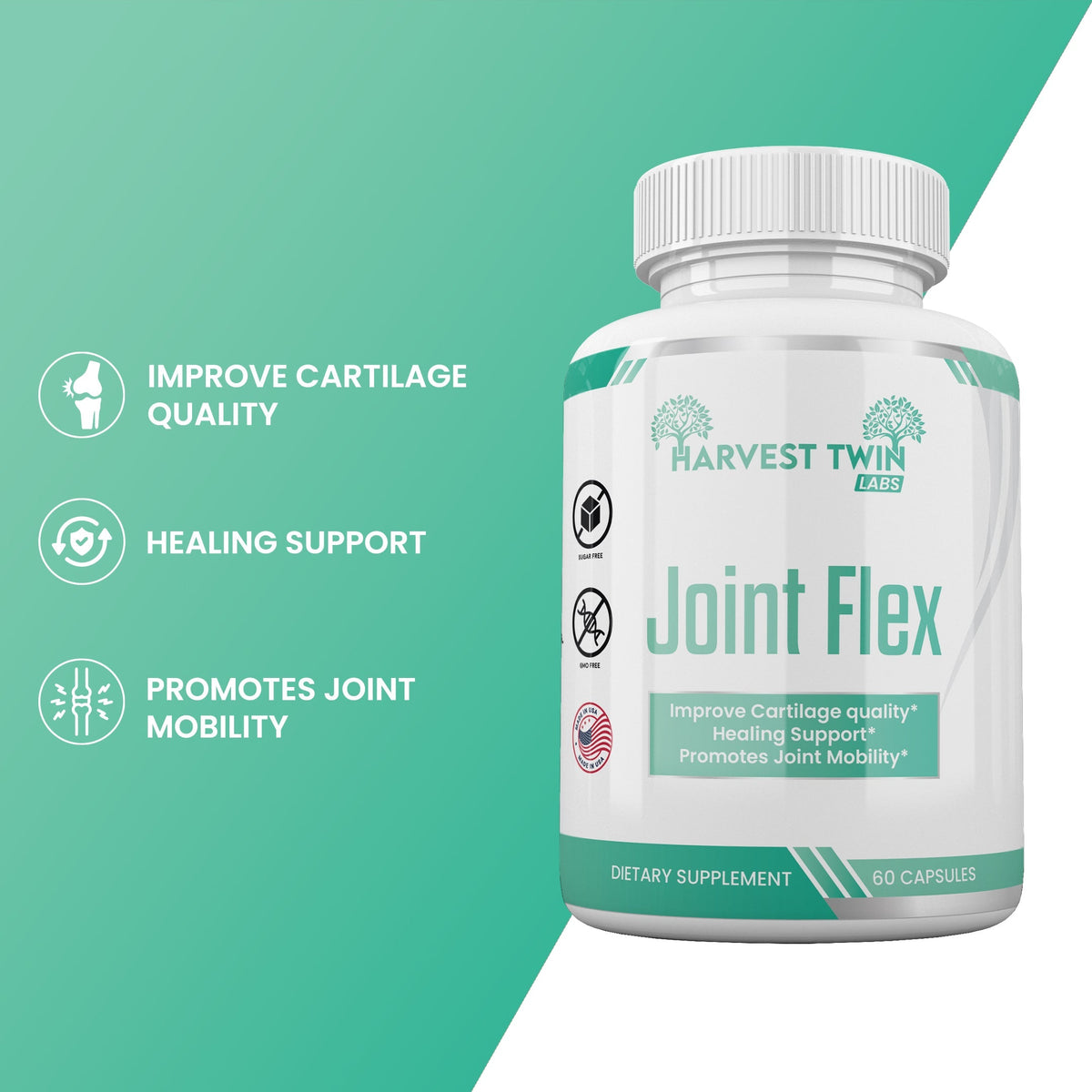
The Dynamic Duo: How Glucosamine and Chondroitin Work Together
|
Time to read 3 min
|
Time to read 3 min
Maintaining joint health is crucial for mobility and overall well-being, particularly as individuals age. With the wear and tear of daily activities, joints can suffer, leading to discomfort and diminished function. In the quest for joint support, two dietary supplements often emerge as key players: glucosamine and chondroitin. These compounds are naturally present in the body and are fundamental components of cartilage, the cushioning tissue between joints. When taken together, they exemplify supplement synergy, where the combined effect is greater than the sum of their individual benefits. This synergy underlines their popularity in managing joint health and mitigating the progression of joint-related conditions.
Glucosamine is a natural compound found in cartilage—the resilient tissue that cushions joints. As an amino sugar, it plays a critical role in forming and repairing cartilage. When taken as a supplement, glucosamine is believed to:
The substance’s significance extends to aiding in the management of osteoarthritis-related symptoms, making it a protective agent for joint health.
Chondroitin sulfate is a vital component in human connective tissues found in cartilage and bone. It serves multiple functions:
Supports water retention: Chondroitin helps cartilage retain water, ensuring its resilience and elasticity.
Aids in cartilage repair: Its presence is crucial for repairing and maintaining healthy cartilage, potentially slowing the degradation process.
Works synergistically with glucosamine: Together with glucosamine, chondroitin assists in rebuilding cartilage and may alleviate pain from joint conditions like osteoarthritis.
These attributes highlight chondroitin’s role in joint health and its potential in preserving cartilage integrity, complementing glucosamine in joint care regimens.
Glucosamine and chondroitin, when taken together, demonstrate a synergistic relationship that enhances their efficacy in promoting joint health. Glucosamine, an amino sugar, contributes to the creation and repair of cartilage, while chondroitin, a complex carbohydrate, aids in maintaining the fluidity and flexibility of cartilage. This partnership allows for better absorption and utilization of both substances, leading to:
Notably, this synergistic effect can vary among individuals, but many report significant improvements in joint comfort and function.
Clinical trials often investigate the efficacy of glucosamine and chondroitin, with mixed results.
The Glucosamine/chondroitin Arthritis Intervention Trial (GAIT) sponsored by the NIH found that the combination may benefit those with moderate-to-severe knee pain.
Another study published in the New England Journal of Medicine concluded that the supplements did not significantly reduce knee pain for all participants.
Meta-analyses have indicated modest symptomatic relief, suggesting a potential benefit for some patients, though not universally agreed upon.
Safety profiles are generally good, with the combination being well-tolerated by most individuals.
When using glucosamine and chondroitin for joint health, adhering to recommended dosages is critical:
Before starting supplementation, consulting with a healthcare provider is advised, especially for those with existing health conditions or taking other medications. Potential mild side effects may include gastrointestinal discomfort or nausea, which can often be mitigated by taking supplements with meals.
Safety requires ensuring high-quality supplements, as the FDA does not strictly regulate these compounds. Quality certification (like USP or NSF) on labels can indicate higher standards of production. Overuse or inappropriate combination with certain medicines can lead to complications, making professional guidance essential in optimizing joint health.
Myth 1: Immediate Results: People often expect instant relief. However, glucosamine and chondroitin require consistent intake over time to produce benefits, often taking several weeks.
Myth 2: Total Joint Rebuild: Some believe these supplements can fully rebuild joints. In reality, while they can support joint health, they don’t reconstruct joints entirely.
Myth 3: Same for Everyone: The effectiveness of glucosamine and chondroitin can vary significantly from person to person. They are not universally effective.
Myth 4: No Side Effects: Although generally safe, they can cause side effects or interact with other medications, so consultation with a healthcare professional is recommended.
When considering joint health, the integration of glucosamine and chondroitin into a care regimen can be beneficial. These supplements, often combined, may help to alleviate symptoms of joint discomfort and promote cartilage health. Careful assessment by healthcare professionals ensures suitability for individual health needs. It involves:
Adherence to a tailored regimen may enhance joint function and potentially slow the progression of joint-related conditions, forging a path towards improved mobility and quality of life.